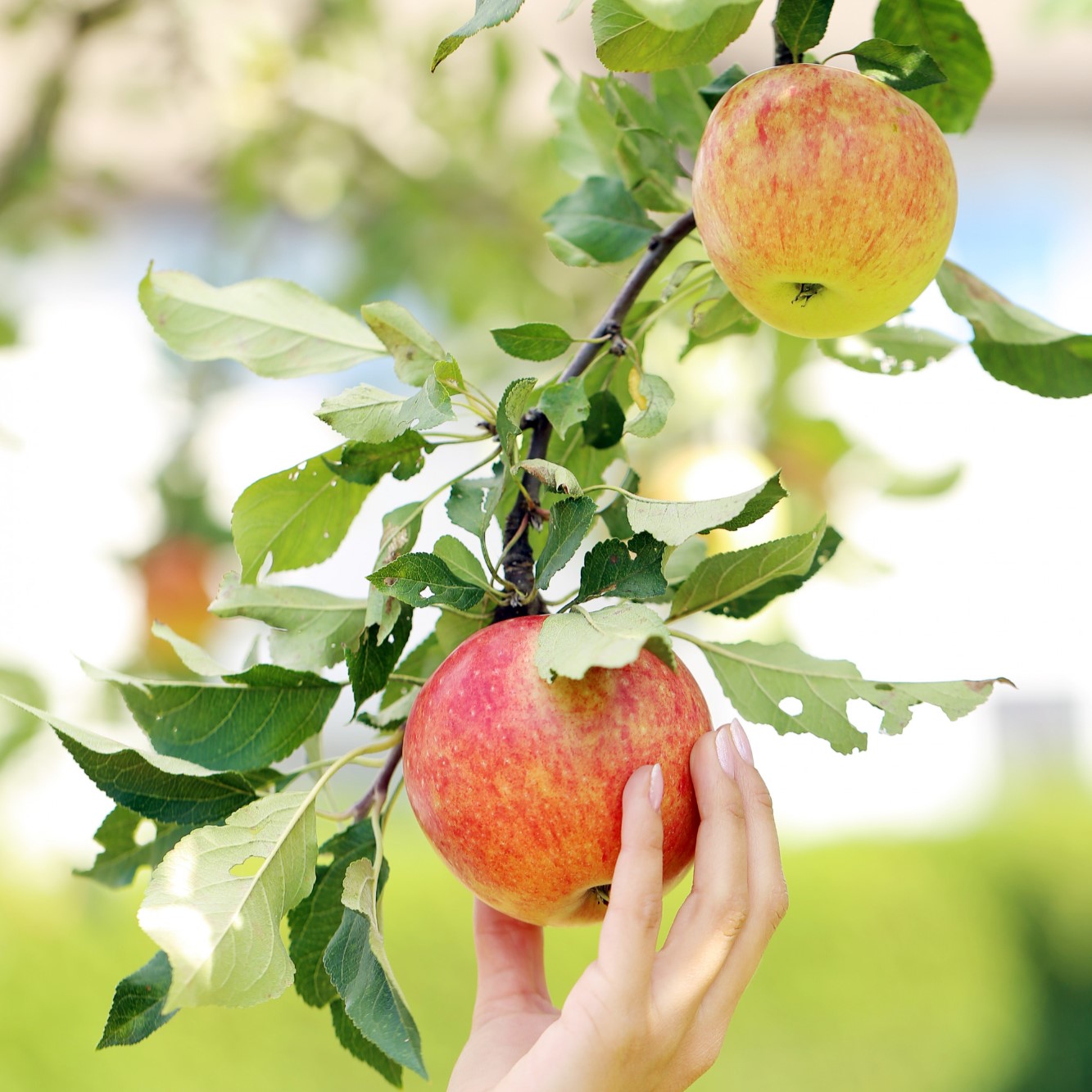People travelling to tehsil Sanjawi of Sibi district in Balochistan have the opportunity to see various types of fruit orchards along with natural landscapes. In the economy of Sanjawi, apple orchards hold a central position. Besides varieties like Gaja, Tor Kulu, Sheen Kulu, Qamari, and Golden, other apple cultivation has been taking place here. However, for some time, apple orchard owners have faced difficulties.
According to a local gardener, Muhammad Hashim, apple trees were on every one-acre plot in his orchard. Unfortunately, all the trees have dried up. Now, he is forced to cultivate seasonal crops in a short period.
Another farmer, Malik Jumma Khan Dammar, says that in areas like Mekalor, Regodha, Gywari, Nask, and Cheliz in Sanjawi, nearly half of the apple trees have withered away.
"A few years ago, the main reason for the agricultural sector's drought was the irregular monsoon. Now, there is power outages of 12 to 15 hours due to load shedding."
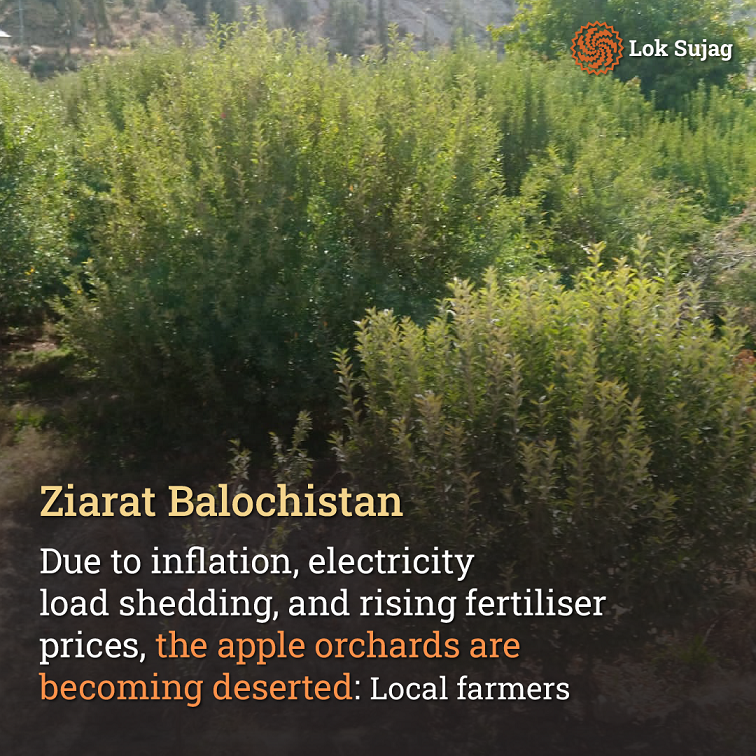
Farmers and growers heavily rely on electric tube wells because solar tube wells are beyond the purchasing power of most farmers. Additionally, the cost of DAP fertiliser bags has increased significantly in recent years, while the prices of various other types of fertilisers have also seen an increase of around 60 per cent.
He says that due to inflation, electricity load shedding, and rising fertiliser prices, the orchard owners in this region have started uprooting apple orchards and are now growing vegetables so that people can earn a livelihood by cultivating crops in a shorter time frame.
He mentions the government's negligence and claims that agricultural department officials come here, promise to resolve issues, and then disappear, leaving the problems unresolved.
In the urban area of Sanjawi, a resident and gardener, Hasan Shah Sanjavi, says that his two-acre apple orchard was destroyed due to several years of drought. Now, he has constructed a market on this land, which is more profitable than agriculture.
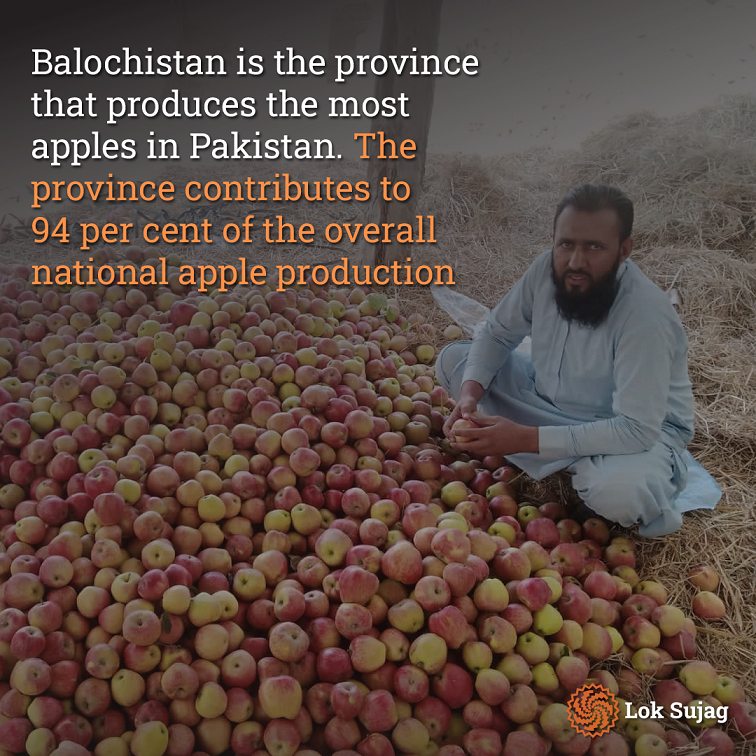
"If the yield is not good and the market rate is not good, the small landholder cannot bear the loss. For him, crops that grow in a short period like peas, tomatoes, potatoes, coriander and garlic prove to be beneficial. "
Samiullah, who works in his orchards, mentions that if the landowners do not benefit, their wages are also hardly paid. He says, "Labourers from Punjab and Sindh work for low wages, which has reduced the demand for local labour."
Trees are getting weaker. Local farmer Raz Muhammad Kakar states that in his area, the roots of apple trees tend to dry up. Afterwards, planting other fruit-bearing trees in the same soil becomes challenging.
Balochistan is the largest apple-producing province in Pakistan, contributing to 94 per cent of the country's overall apple production. Within Balochistan, the district of Killa Saifullah is responsible for 55 per cent of the province's total apple production. Other areas such as Pishin, Zhob, Killa Abdullah, and Ziarat are also renowned for their apple cultivation.
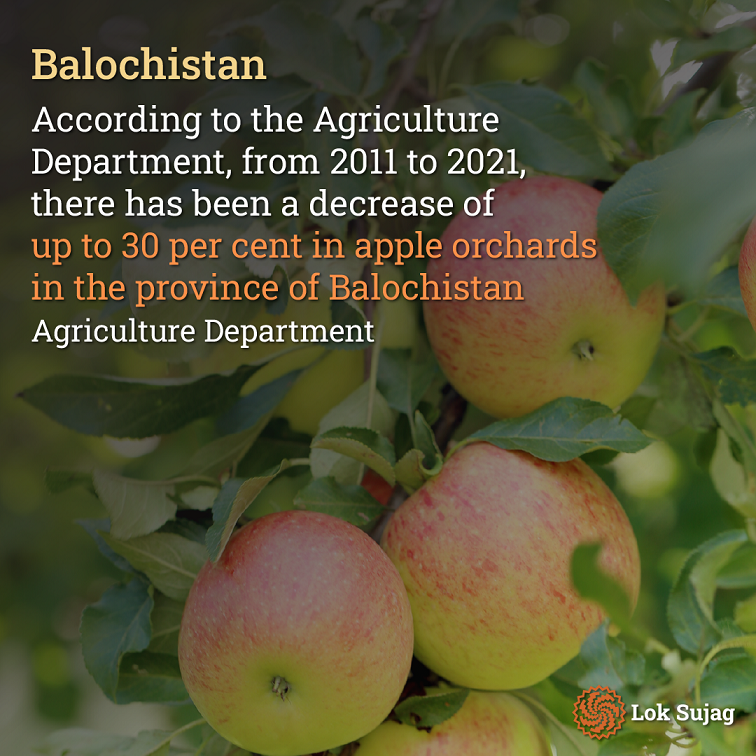
Farmers say the area under apple cultivation has significantly decreased in recent years. A report from Balochistan's Department of Agriculture confirms this trend. The report states that from 2011 to 2021, there has been a 30 per cent reduction in apple orchards across the province.
In 2011, there were 2 lac 52 thousand and 501 acres of apple orchards in Balochistan, which has decreased to 177,635 acres by 2021.
Additionally, in the district of Killa Saifullah, the largest apple-producing district in the province, there has been a 35 per cent reduction in the area under apple cultivation over the past 10 years.
However, farmers argue that these figures are before the floods in 2021. The floods caused significant damage to apple orchards in several districts, further reducing the area under apple cultivation.
The figures for apple demand and income also indicate that with the reduced cultivation area, Pakistan increasingly relies on importing more apples from foreign countries to meet its needs.
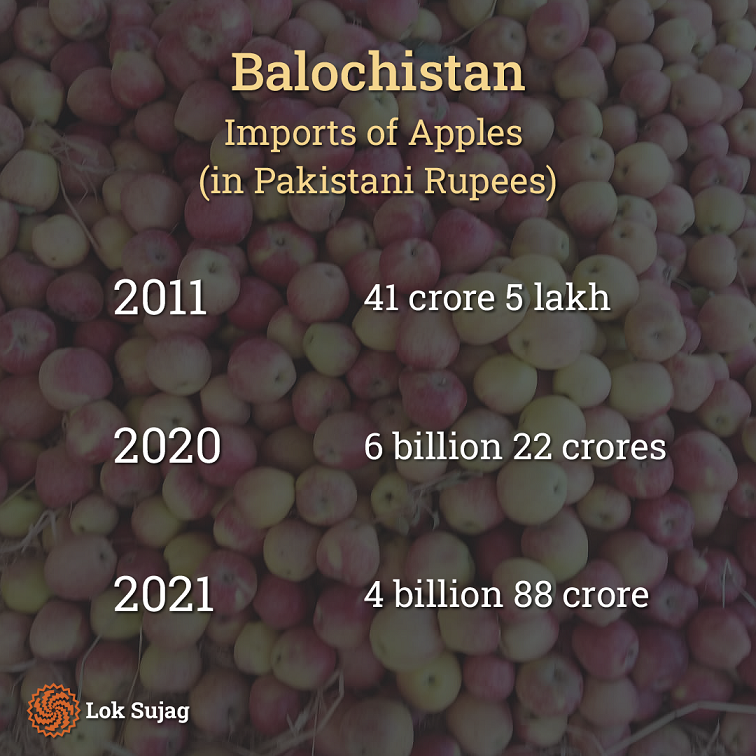
In 2011, apples worth 41.5 million rupees were imported into the country, while in 2020, this amount increased to 6.22 billion rupees. In 2021, apples worth 4 billion 88 crore rupees had to be imported.
Abdul Saboor, who is involved in agriculture in Ziarat, mentions that landowners lack awareness about non-standard agricultural chemicals and their use. Unnecessary and untimely use of these chemicals can be detrimental. The price of DAP fertiliser is high, so landowners are using cheaper and non-standard fertilisers as well.
According to him, the price of an empty crate of apples ranges from 70 to 100 rupees. However, when filled with paper, straw, covers, and other materials, the price can go up to 200 rupees or more.
Also Read
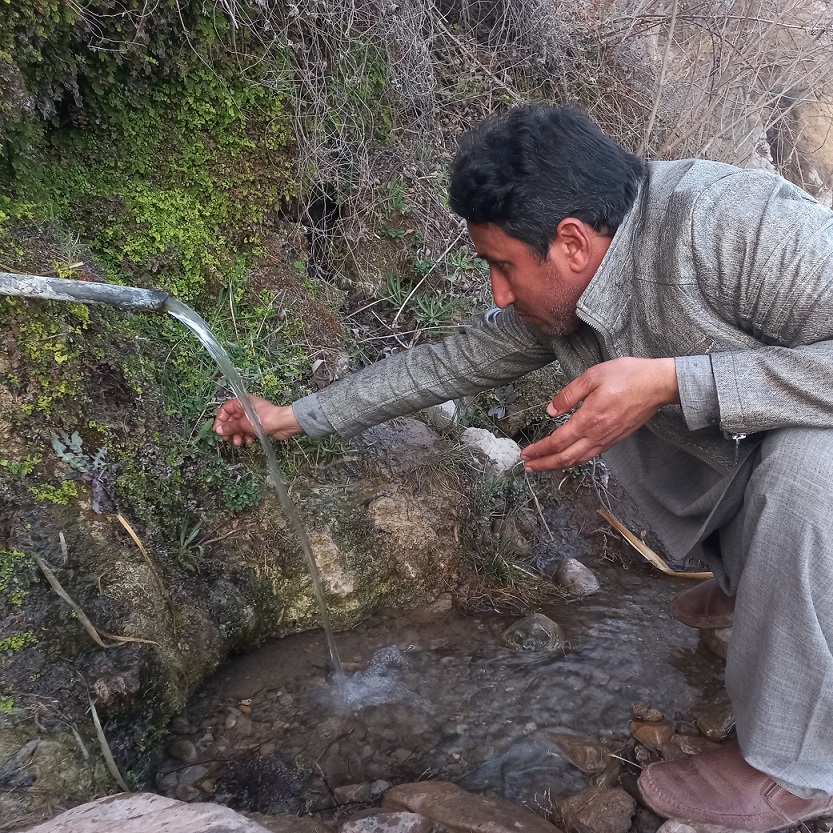
In central Kurram, springs dry up, orchards wither, and hope fades amidst depleting groundwater
Additionally, the expenses for transporting produce from the farm to the market, including labour costs, are approximately 200 rupees per crate. So, when all costs are factored in, a crate of apples typically costs around 400 rupees by the time it reaches the market. Sometimes, due to unfavourable prices, farmers may incur losses, but it's not always the case.
"From Sanjawi to Multan, Faisalabad, and Lahore, a truck is now charging several times more rent than before, while the price of apples remains the same as it was eight years ago."
A fruit agent and the owner of a transport company, without revealing his name, mentions that the “Punjabi tenants pay us in advance a reasonable amount so that we can pay these orchard owners and retrieve the fruit once it's ready. If the orchard owners do not provide the fruit, we find ourselves in a difficult situation. The difficulties of the orchard owners also affect them, the company agents, and the tenants. All three are impacted.”
Published on 20 Oct 2023
